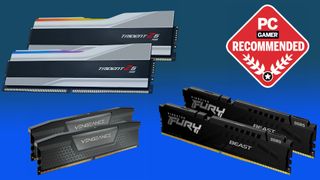ROG Ally mostly beats Valve's Steam Deck in repairability and that's great news for miniaturised PC gaming
The ROG Ally makes battery repairs a breeze.
If something were to break on your ROG Ally it might be a surprisingly simple repair. That's what repair site iFixit is saying after its teardown of the handheld gaming console, which it made look pretty easy.
In a short video on its YouTube channel, the repair company set about removing each component making up Asus' handheld Windows PC.
For the most part, a set of screwdrivers will see you through the disassembly process. The battery, thumb sticks, motors, SSD, and cooling components all peel off once unscrewed from the motherboard/case of the Ally. The only sticking point is the screen, which iFixit notes "isn't repair friendly", but also isn't too much of an issue to remove.
The ROG Ally actually scores a big win versus the Steam Deck for repairability on a couple of points.
First, the battery. Whereas the battery is glued down in the Steam Deck, requiring a heat gun for the most effective removal, in the ROG Ally it's simply screwed in. Then there's the thumbsticks, which are easier to remove directly without touching the wider thumbstick module on the ROG Ally. On the Steam Deck, you're better off switching out the entire module, though that's a relatively affordable and easy option, so both are pretty decent in this regard.
iFixit also notes that Asus has reinforced the bumper buttons on the ROG Ally, which are a potential failure point on the Steam Deck.
The ROG Ally uses the same SSD format as the Steam Deck, too, which is just a win for customers as there are plenty of these now on the market, all the way up to 2TB.
The biggest gaming news, reviews and hardware deals
Keep up to date with the most important stories and the best deals, as picked by the PC Gamer team.

Best DDR5 RAM: the latest and greatest
Best DDR4 RAM: affordable and fast
I'll admit this wasn't the outcome I had expected. Maybe that's me conflating the hardware and software ecosystems of these machines, but considering the Steam Deck's more all-together and open software package next to the Windows-based ROG Ally, I thought Valve's device would be a shoe-in for most repairable, too. Yet Asus has done a commendable job with this one, which shouldn't be surprising knowing how long Asus spent working on the design.
Though it must be said that Valve offers a wide range of spare parts for the Steam Deck, and that's not something you can get from Asus right now.
However you cut it, it's crucially important for these PC gaming handhelds, if they are to stick around, that they be repairable from the very beginning. PC gaming is at its best when it's easy to fix, mod, and customise.

Jacob earned his first byline writing for his own tech blog. From there, he graduated to professionally breaking things as hardware writer at PCGamesN, and would go on to run the team as hardware editor. He joined PC Gamer's top staff as senior hardware editor before becoming managing editor of the hardware team, and you'll now find him reporting on the latest developments in the technology and gaming industries and testing the newest PC components.
Most Popular







